Polyphagous Shot Hole Borer treatment
To enlist your trees, kindly utilise the 'Contact' tab above, providing details on tree quantities and locations for treatment. For additional information, on PSHB & our treatment please refer to the details below. As our current wait times are extending, we will include updates on wait times in our response to your message.
In this urgent time for our environment, let’s come together to make a positive impact, contributing to tree preservation & fostering an even healthier environment then the one we started in. 𓆣
Summary
Our treatment currently offers one of the only solution in Australia. Our products address key issues such as penetration, resistance, and environmental impact. Eco BORA BARRIER SPRAY© and ABORA-PENATRATE©, target fungal infections deep within the tissue. We also offer BIOLOGICAL SOIL RENOVATION to enhance your tree's natural immunity defense. Early detection and action are crucial.
The current response, led by the Department of Primary Industries and Regional Development (DPIRD), focuses primarily on tree removal. There seem to be no negotiations or solutions regarding the necessity of tree destruction in the eradication efforts by the department of Agriculture PSHB response team.
_________________________________________________________________________
Quote: from www.agriculture.gov.au as follows:
“The emergence of the Polyphagous Shot Hole Borer (PSHB) Beetle in West Australia signifies an imminent and severe threat to our local ecosystems, urban landscapes, and agricultural sectors. In a mere year, its relentless spread is threatening damage across the nation.
The beetles have a symbiotic relationship with the Fusarium fungus which is used as a food source for the beetle and its larvae. The fungus colonises the vascular tissue of susceptible trees. It’s likely the beetle and fungus complex, not the fungus alone, is what kills susceptible trees. Symptoms include wilting and dieback of tree branches and leaves, often starting in the upper canopy.
Native to southeast Asia (China, Japan, Thailand, Vietnam), PSHB has spread to Israel, South Africa, and the United States of America. Polyphagous shot-hole borer has been recorded to cause substantial economic damage in other countries.
PSHB is considered both an agricultural and environmental pest, with more than 400 host species including ornamental, fruit, nut, native and amenity trees. Euwallacea fornicatus and the fungi Fusarium euwallaceae, are listed on the national priority, list of exotic environmental pests, weeds that diseases, The environmental impact of polyphagous shot-hole borer in Australia cannot be fully predicted as the susceptibility of many native plant species is not currently known. There are, however, many native species that are known hosts in other countries, indicating the potential for significant environmental damage.
PSHB was detected near Perth, Western Australia in August 2021, and is contained to a quarantine area around Perth. It is currently under a $41.29 million national eradication program under the Emergency Plant Pest Response Deed with the WA Department of Primary Industries and Regional Development (DPIRD) leading the response. For further information on PSHB and the national response visit the outbreak website.” End quote
$41.29 million national eradication program Primarily on host tree eradication

The consequences are dire, with the potential for devastating for leafy green neighbourhoods on our cherished tree species. Overcoming the challenge of reaching the deeply embedded beetle and fusarium fungus has been an ongoing struggle. Leveraging our cutting-edge delivery system, we now present a critical solution to help safeguard our environment. The urgency to act cannot be overstated, as the unchecked proliferation of this beetle jeopardies the shelter & temperatures of our natural surroundings.


To date, global researchers, with a focus on the United States, have encountered challenges in identifying a viable product or mechanism for the comprehensive treatment of trees on a large scale. The impediments to discovering effective solutions are multifaceted:
1. Limited penetration of treatments through the diverse layers of timber and associated barrier functions.
2. The intricate layers are intertwined with barriers of hydrophobic and hydrophilic nature, necessitating an amphiphilic approach.
3. Most toxins lack systemic design or, at best, exhibit restricted systemic activity, limiting their applicability to this specific issue.
4. The emergence of drug resistance poses a persistent threat, anticipated within a relatively short timeframe, encompassing both insecticidal and fungicidal products.
5. Injudicious use of common surfactants can exacerbate damage to already compromised trees.
6. The prohibitive development costs contribute to elevated product prices.
7. The extensive timeline of approximately 9 years for alternative development amplifies the urgency, given the potential disastrous consequences of prolonged inaction.


______________________________________________________________________
x4 process MANUKdesign Eco-Tech solutions as follows:

1)
Eco BORA BARRIER SPRAY©
Eco BORA BARRIER SPRAY© effectiveness in managing fungal infections and suffocating diseases. Here are key points.

1. **Antifungal Properties:** Eco BORA BARRIER SPRAY©, composed of unique formulations, exhibits potent antifungal properties that hinder the growth and proliferation of various tree pathogens.
2. **Prevention of Spore Germination:** Eco BORA BARRIER SPRAY© interferes with the germination of fungal spores, preventing their establishment on tree surfaces. This contributes to the overall reduction of infection rates.
3. **Disruption of Cell Membranes:** The constituents of Eco BORA BARRIER SPRAY© disrupt the cell membranes of fungal cells, impairing their structural integrity and hindering essential cellular functions. This mechanism serves to weaken and control the fungal infection.
4. **Broad-Spectrum Activity:** Eco BORA BARRIER SPRAY© showcases broad-spectrum activity against a range of fungal species, making it versatile in addressing different tree diseases.
5. **Suffocation of Pathogens:** Eco BORA BARRIER SPRAY© creates a physical barrier on tree surfaces, forming a protective shield against pathogens. This suffocating effect impedes the access of fungi to nutrients and prevents their colonization.
6. **Reduction of Inoculum:** Eco BORA BARRIER SPRAY© contributes to the reduction of inoculum, limiting the availability of infectious agents. This is particularly crucial in managing the spread of diseases within tree populations.
7. **Residual Effectiveness:** Residues from Eco BORA BARRIER SPRAY© persist on treated surfaces, providing ongoing protection against potential reinfections. This residual effectiveness is valuable in maintaining tree health over an extended period.
8. **Compatibility with Integrated Pest Management (IPM):** Eco BORA BARRIER SPRAY© aligns with integrated pest management strategies by offering an environmentally friendly option for disease control, minimizing the need for more aggressive chemical interventions.
9. **Minimization of Resistance Development:** The multifaceted mode of action of Eco BORA BARRIER SPRAY© reduces the likelihood of pathogens developing resistance, enhancing the long-term sustainability of these treatments.
10. **Enhanced Tree Vigor:** By curbing fungal infections, Eco BORA BARRIER SPRAY© contributes to the overall vigor and health of trees. This is vital for sustaining the resilience of trees against various environmental stressors.
Utilizing Eco BORA BARRIER SPRAY© in a targeted and responsible manner, considering factors such as formulation, concentration, and application timing, can significantly contribute to the management of fungal infections and the promotion of tree health in arboriculture. We encourage reapplication depending on individual circumstances, and local area infestation rates.
2)
ABORA-PENATRATE©

Combining ABORA-PENATRATE© with natural BORA BARRIER SPRAY© capitalizes on the unique strengths of both components, offering comprehensive benefits in addressing fungal infections, including those caused by the Polyphagous Shot Hole Borer (PSHB).
1. **Enhanced Penetration and Delivery:**
- ABORA-PENATRATE©'s exceptional penetration abilities facilitate the deep transport of natural BORA BARRIER SPRAY© into various layers of tree tissues.
- This ensures that the fungicidal properties of NATURAL BORA BARRIER SPRAY© reach the depth necessary to combat infections, providing effective control against diseases associated with PSHB infestations.
2. **Synergistic Antifungal Action:**
- The collaborative action of NATURAL BORA BARRIER SPRAY© and ABORA-PENATRATE© results in a synergistic antifungal effect, addressing a broad spectrum of fungal species, including those associated with PSHB infestations.
3. **Efficient Disruption of Pathogens:**
- ABORA-PENATRATE© enhances the disruption of fungal cell membranes, weakening the structural integrity of pathogens.
- NATURAL BORA BARRIER SPRAY© complements this by actively targeting and neutralizing fungal threats, including those introduced by PSHB.
4. **Prevention of Spore Germination:**
- The combination inhibits the germination of fungal spores, crucial in preventing the establishment and spread of infections associated with PSHB infestations.
5. **Suffocating Effect on Pathogens:**
- NATURAL BORA BARRIER SPRAY©, supported by ABORA-PENATRATE©, creates a physical barrier on tree surfaces, suffocating pathogens and impeding their access to nutrients.
- This suffocating effect is instrumental in preventing the further development and proliferation of PSHB-related diseases.
6. **Minimization of Resistance Development:**
- The multifaceted approach of NATURAL BORA BARRIER SPRAY© and ABORA-PENATRATE© reduces the likelihood of pathogens, including those linked to PSHB, developing resistance over time.
7. **Extended Residual Protection:**
- Residues from the combined treatment persist on treated surfaces, offering prolonged protection against potential reinfections, contributing to sustained tree health in the face of PSHB challenges.
8. **Environmentally Friendly Approach:**
- NATURAL BORA BARRIER SPRAY© and ABORA-PENATRATE©, when used together, provide an environmentally friendly option for combating tree diseases associated with PSHB infestations, aligning with sustainable arboriculture practices.
9. **Comprehensive Tree Vigor Support:**
- The synergy of NATURAL BORA BARRIER SPRAY© and ABORA-PENATRATE© contributes to overall tree vigor, enhancing resilience against the stressors introduced by PSHB infestations and associated fungal diseases.
This integrated approach harnesses the strengths of NATURAL BORA BARRIER SPRAY© and ABORA-PENATRATE© to deliver an effective and environmentally conscious solution in addressing fungal infections, including those triggered by the Polyphagous Shot Hole Borer. We encourage reapplication depending on individual circumstances, and local area infestation rates.
For consultation and treatment bookings, use our contact page below with a short description of tree quantities, variety, rough sizes & tree location.
3)
MANUKdesign BIOLOGICAL SOIL RENOVATION

- Tree & environment investigation
- Soil analysis
- Soil Hydrophobic treatment & hydration
- 3 tier bio-mulching stimulation with over 1 billion probiotics integrated into a prebiotic mulch with premium compost.
- We encourage reapplication depending on individual circumstances, and local area infestation rates.
______________________________________________________________
More details about Polyphagous
A quick summary of all the paragraphs put together into dot point form below, find a more in depth synopsis beneath these dot points.
- To mitigate the impact of the Polyphagous Shot-Hole Borer (PSHB), it is advised to prioritize the health of trees by ensuring they are well-nourished and adequately watered.
- Regularly inspect and remove frass to expose tunnels, using a wire to destroy larvae carefully. Trim affected branches when feasible, containing the borer larva within the removed section.
- Seek guidance from a certified entomologist if a large tree shows signs of illness with indications of borer activity.
- When selecting trees, consult a tree nursery for varieties less susceptible to borer attacks.
- Monitoring is essential for early detection (example images down page) of PSHB, a highly invasive beetle with a broad host range.
- The beetle's life cycle involves a close relationship with an ambrosia fungus, causing branch dieback and tree death by disrupting the vascular system.
- High-risk host trees include Box Elder Maple and Black Locust, but monitoring for symptoms like entrance holes, frass, noodles, gumming, discoloration, and sugar volcanoes aids in early detection and eradication efforts, there are cases in native trees such as Papper Barks.
- The PSHB has been identified in various regions globally, posing challenges for management and necessitating proactive measures.
More in depth including host trees:
Prevent
• Ensure that well-nourished and adequately watered tree’s, exhibiting robust health, are more likely to withstand potential threats compared to plants under stress.
• Remove frass to reveal tunnels and destroy larvae by carefully using a wire.
• Trim affected branches where feasible, ensuring that the borer larva is contained within the removed section. Verify by checking for borer holes or tunnels.
• Seek guidance from a certified entomologist if a large tree shows signs of illness with indications of borer activity.
• When choosing trees, consult a tree nursery for varieties less prone to borer attacks.
Natural enemies
- Parasitic wasps and predatory beetles attack borer larvae and pupae in tunnels.
- Tiny parasitic wasps may attack the eggs of wood boring moths.
What to observe:
Monitoring trees is crucial for early detection of PSHB in eradication efforts. Spotting the beetle is challenging due to its size and habitat within trees, but certain symptoms may indicate its presence.
Identifying an infestation includes spotting multiple entrance holes of ballpoint pen tip size (0.85 mm) on the trunk or branches (Figures. 5 & 6). Frass, a powdery residue from boring insects, signals insect activity (Figure. 7). Tree heavily invested may show noodles, thin tubules of compacted frass emerging from shot holes (Figure. 8).
Gumming, caused by excessive resin or sap, may push the beetle out, aiding monitoring (Figure. 9). Outer bark discoloration around shot holes results from resin (Figure. 10). Sugar volcanoes, a response to vascular system disruption, lead to a crystalline ring around shot holes (Figures. 11 & 12). Branch dieback is a common PSHB symptom (Figure 4).
More description
Polyphagous shot-hole borer, PSHB (Euwallacea fornicatus) is a tiny exotic wood boring beetle native to south-east Asia (Figure. 1). The beetle is highly invasive, attacking a wide range of both healthy and dead or dying trees. It burrows into tree trunks and branches where it lives in association with an ambrosia fungus that can cause infection of the plant tissues (Figure. 1). Eventually the beetles chew their way out of the wood to find a new host, producing shot holes in the tree.
In 2003, the beetle was detected in California and has since spread to Hawaii (2007), Israel (2009), South Africa (2017) and Palestine (2019). All incursions have proved challenging to manage. The impact has been predominantly in urban environments but there has been some cross-over into agriculture and natural ecosystems.
In 2021, PSHB was detected for the first time in Australia in a Box Elder Maple tree in East Fremantle, Western Australia and has since been found throughout the Perth metropolitan region. Western Australia is currently undertaking an extensive management and eradication program.

Figure 1. Close up of PSHB sitting atop the ambrosia fungus.
PSHB life history
PSHB female beetles are slightly less than 2 mm long or about the size of a sesame seed (Figure. 2) Males are even smaller, around 1.6 mm. he egg, larvae, pupa and male adult spend their entire life within the tree. Only the females disperse to new hosts where they penetrate the wood to lay 20-50 eggs. Development time from egg to adult usually takes 30-40 days but can be shorter in hot weather (22 days at 24°C). A female is able to produce males from unfertilised eggs and is able to start a whole new colony on her own.
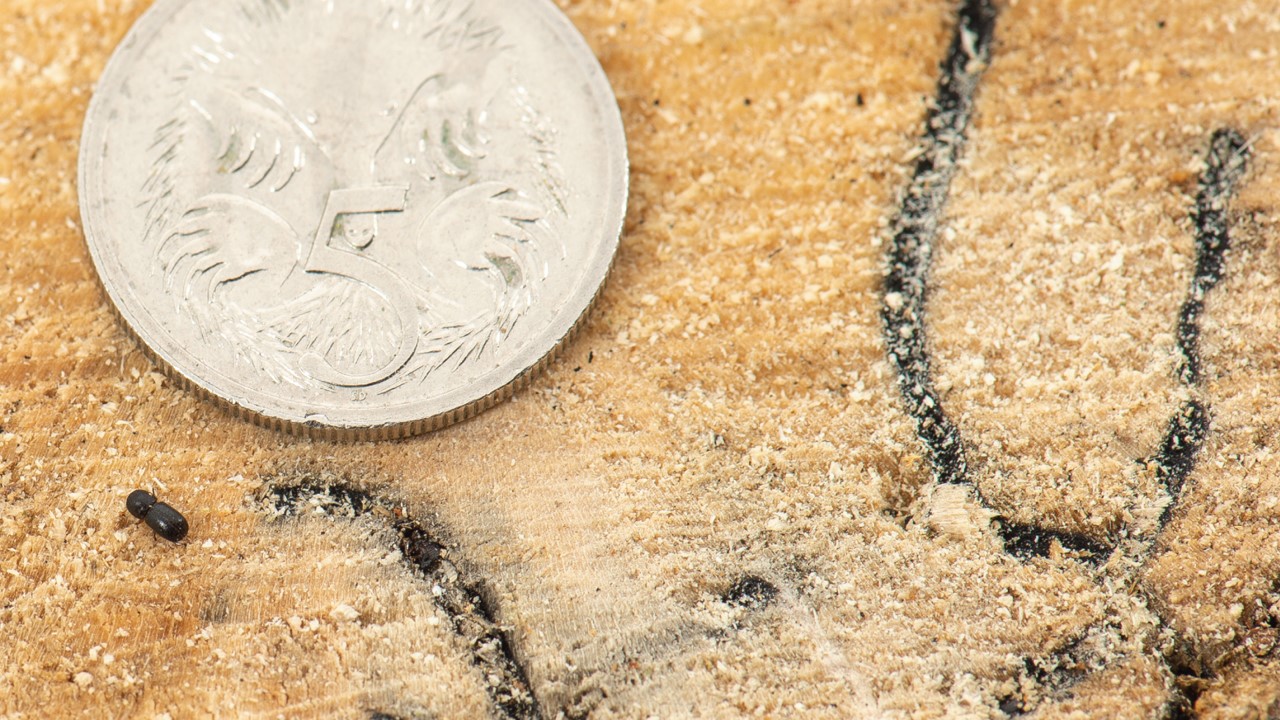
Figure 2. PSHB next to five cent piece showing relative size.
Relationship with the Ambrosia fungus
The beetle has a close, mutually beneficial relationship with the ambrosia fungus which it cultivates as a food source. Fusarium euwallaceae is the most commonly associated ambrosia fungal species discovered in association with PSHB. However, in Australia the beetle is associated with an unnamed species, Fusarium sp. [AF-18], which means any potential impacts may vary from overseas experience.
PSHB have small sacs in their mouth which store the spores of the fungus. Once the beetle has bored its way into a tree, it creates pathways (called ‘galleries’) within the branches and trunks of the tree (Figure. 3). The fungus is planted in these galleries and left to germinate and grow.
PSHB and the Fusarium fungus cannot survive without each other. Without the fungus, the beetle does not have a food source. Without the beetle, the fungus has no way of being transported to different places within the tree or new hosts. Combined, the two species cause branch dieback and tree death by disrupting the plants vascular system and flow of water and nutrients (Figure. 4).
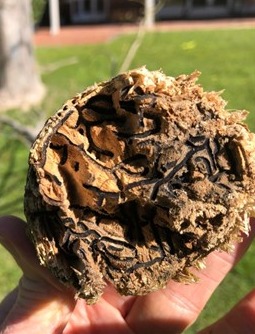
Figure 3. Galleries produced by the beetle burrowing into a tree branch.
Host trees
The PSHB has a host range of more than 600 tree species, The list is ever evolving for updates. Please refer here. https://www.agric.wa.gov.au/sites/gateway/files/PSHB-WA-Host-List.pdf.
Trees in which the beetle is able to complete its life cycle (“reproductive hosts”) are preferred and are more likely to be heavily damaged through infestation. In California, South Africa and Israel the Box Elder Maple tree (Acer negundo) has been observed as the highest risk reproductive host.
Western Australia has identified the Box Elder Maple (Acer negundo) and the Black Locust (Robinia pseudoacacia) as its two highest risk host trees.
Other high risk reproductive hosts found in WA include:
- Coral Tree (Erythrina x sykesii, Erythrina spp.)
- Morton Bay Fig (Ficus macrophylla)
- Port Jackson Fig (Ficus rubiginosa)
- London Plane (Platanus x acerifolia)
- White mulberry (Morus alba)
- Black mulberry (Morus nigra)
- Poinciana (Delonix regia)
- Mirror bush (Coprosma repens)
Trees inhabited by the beetle but do not support beetle reproduction (“non-reproductive hosts”) can often tolerate PSHB damage. The fungus does not thrive or become established in these trees.
What to look for
Tree monitoring plays an important role in the early detection of PSHB which is vital in any eradication program. Unfortunately, the beetle’s size and habit of spending most of their life inside the tree makes them hard to spot. There are, however, a few symptoms to look for which indicate the beetle could be present.
With an established infestation you will see multiple entrance holes (shot holes) on the trunk or branches that are approximately the size of a ballpoint pen tip (0.85 mm in diameter) (Figures. 5 & 6).
The occurrence of frass (fine powdery refuse produced by the boring insects) on the trees indicates the presence of the insect activity (Figure. 7).
Noodles, which are thin tubules of compacted frass emerging from shot holes, are often a sign that the tree is heavily invested (Figure. 8).
Gumming is caused by excessive thick resin or sap being pushed out of the shot holes. In the process the sap can push the beetle out of the gallery aiding the monitoring process (Figure. 9)
Discoloration or staining of the outer bark around the shot holes is caused by resin (Figure. 10).
Sugar volcanoes are caused by the trees response to the disruption of the vascular system by the borer. A sugary substance is exuded from the entry and exit holes. As it dries it forms a white crystalline ring around the shot hole. (Figures. 11& 12). Sugar volcanoes are common on avocado trees overseas.
Symptom images:
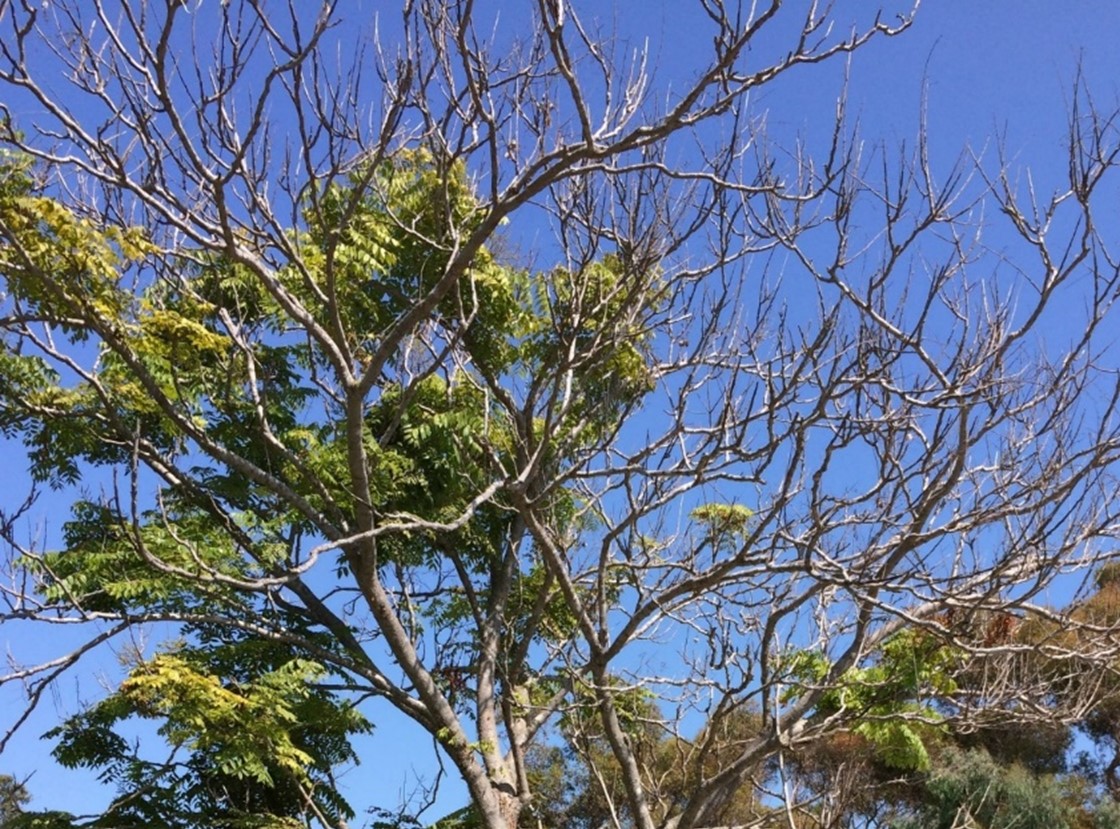
Figure 4. Branch dieback is a common symptom of PSHB infestation
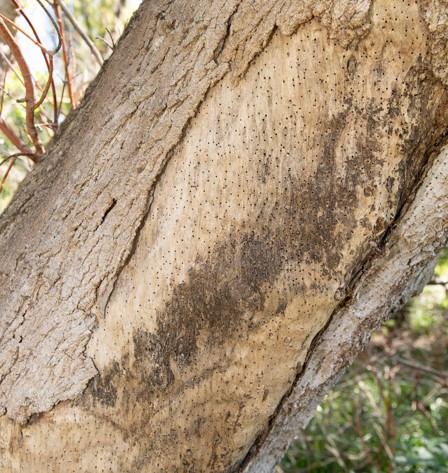
Figure 5. Shot holes in a Box Elder Maple tree trunk
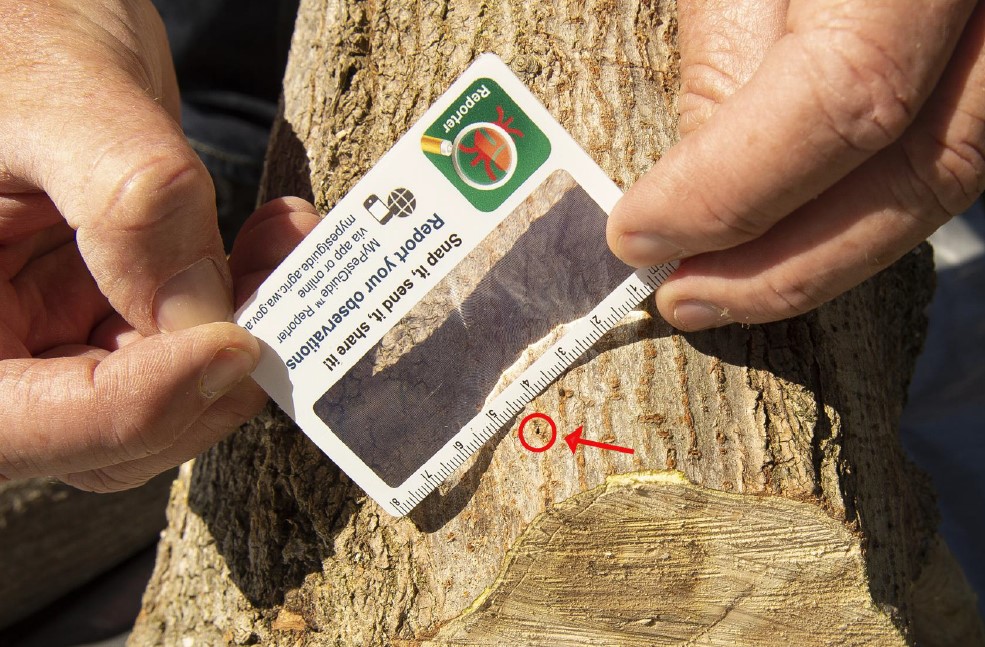
Figure 6. Recently infected tree showing relative size of a shot hole.
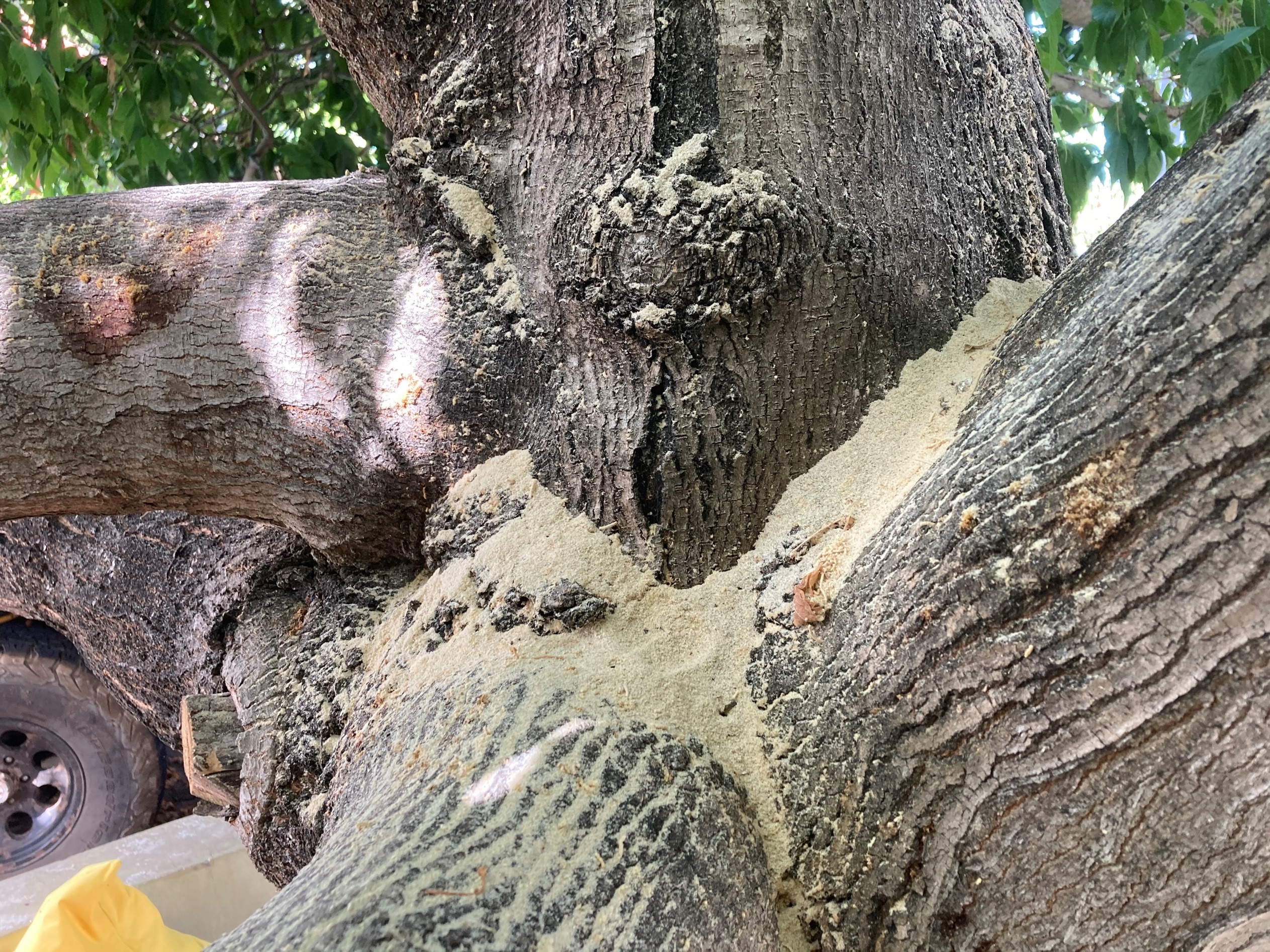
Figure 7. Excessive frass on a Box Elder Maple tree trunk.

Figure 8. “Noodles” protruding from PSHB shot holes.
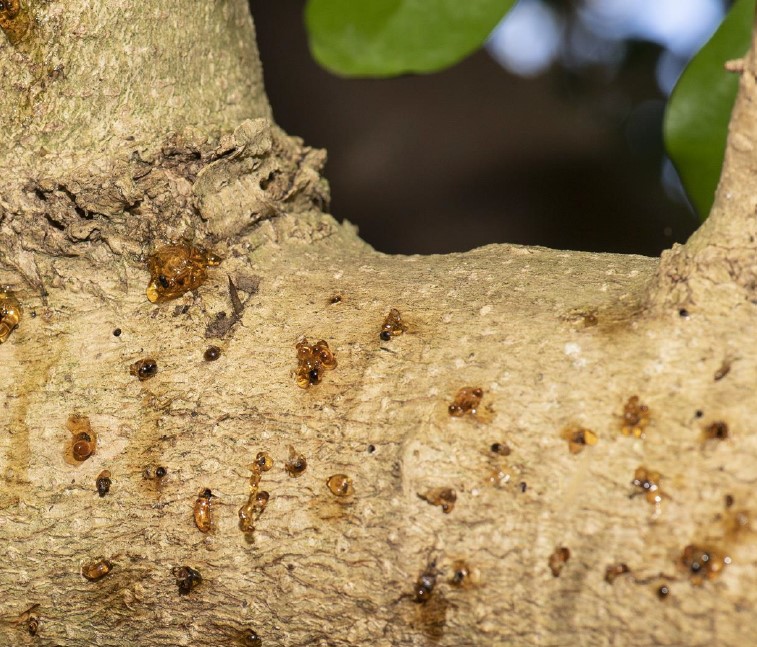
Figure 9. Gumming refers to resin being expelled from the shot holes.
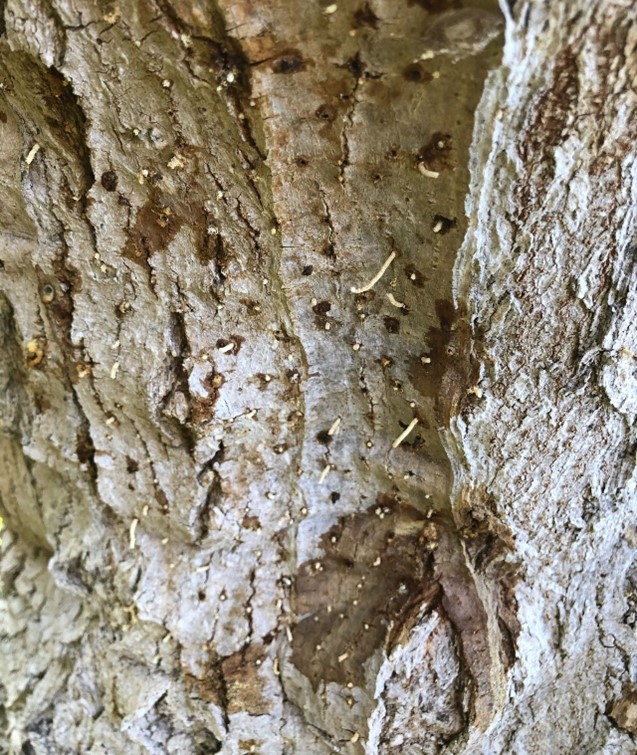
Figure 10. Discolouration on the trunk of a Box Elder Maple tree.
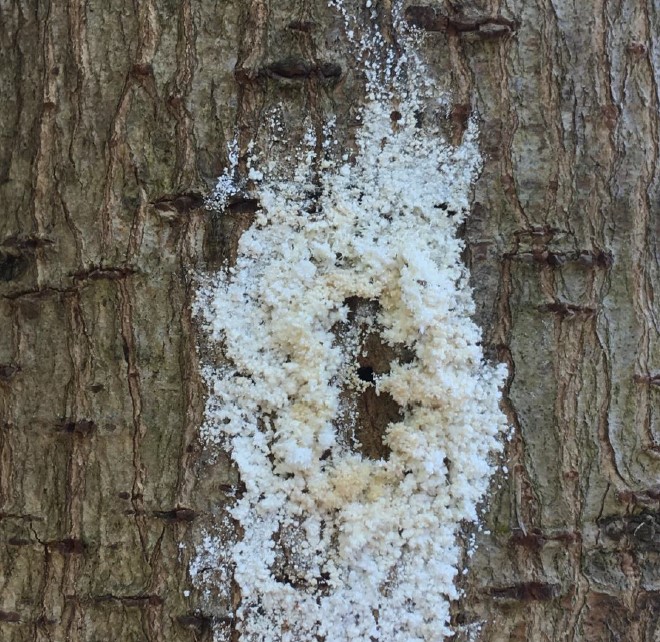
Figure 11. Sugar volcano on an avocado tree.

Figure 12. Sappy sugar volcano on a Morton Bay fig tree.
In the face of challenges, let's unite to protect our local temperatures and foster even more resilience in our natural environment than when we started, with or without PSHB, our service will reinvigorate your entire tree ecosystem. 𓅯
__________________________________________________________________________
DISCLAIMER
**Disclaimer:**
The information provided herein is for general informational purposes only and should not be considered professional advice. Our products, including Eco BORER BLOCK SPRAY, are intended for arboricultural use and are not substitutes for professional guidance.
**No Liability:**
We expressly disclaim any liability for the outcomes or consequences resulting from the use or misuse of our products. Users are solely responsible for ensuring that the application of our products complies with local regulations, environmental guidelines, and best arboricultural practices.
**No Claims of Efficacy:**
While we strive to provide effective solutions, we make no claims regarding the specific outcomes or efficacy of our products. Arborists, tree care professionals, and users are encouraged to conduct their own assessments and consult with qualified professionals to determine the suitability of our products for their specific needs.
**Consultation with Arborist Professional:**
Users are strongly advised to consult with a certified arborist or tree care professional before applying any of our products. The expertise of these professionals is invaluable in assessing tree health, diagnosing diseases, and recommending appropriate treatments.
**Product Application Risks:**
Tree health can be influenced by numerous factors, and the use of any arboricultural product carries inherent risks. Users should carefully follow product guidelines, consider environmental conditions, and assess tree species susceptibility before application.
**Legal Compliance:**
Users are responsible for ensuring compliance with all local, state, and federal regulations related to tree care products. It is essential to be aware of and adhere to any restrictions, permits, or guidelines governing the use of arboricultural treatments in specific regions.
**No Warranty:**
We do not provide any warranties, express or implied, regarding the suitability, reliability, or accuracy of the information or products offered. Users utilize our products at their own risk.
In summary, this disclaimer emphasizes the importance of seeking professional advice, understanding potential risks, and complying with applicable regulations when using our products. Users should exercise due diligence and consult with arborist professionals to make informed decisions regarding the application of Eco BORER BLOCK SPRAY or any other arboricultural products.
_____________________________________________
Photo Credits
e360.yale.edu/features
Galleries within ISHB infested castor bean. Source: Akif Eskalen, UCANR
university of California
JOHN KABASHIMA
https://agriculture.vic.gov.au/home
Western Australian Department of Primary Industries and Regional Development.


